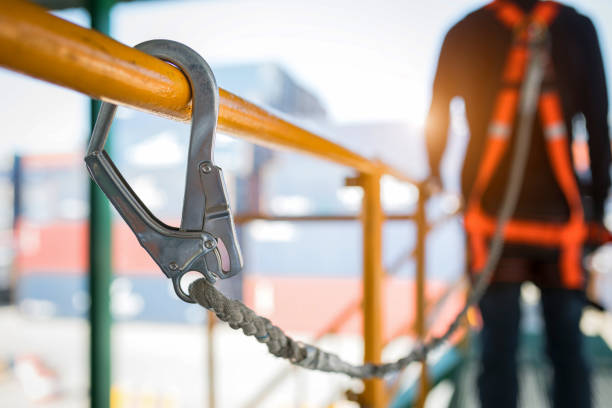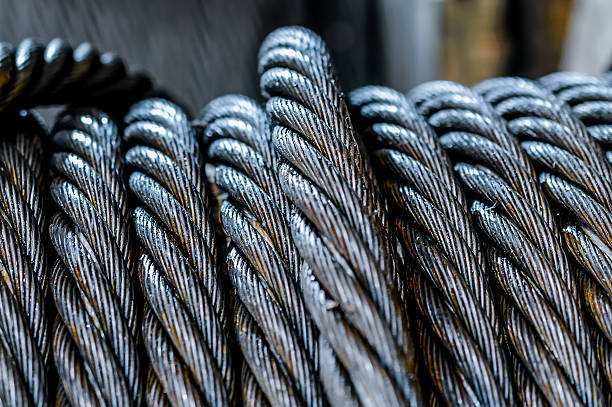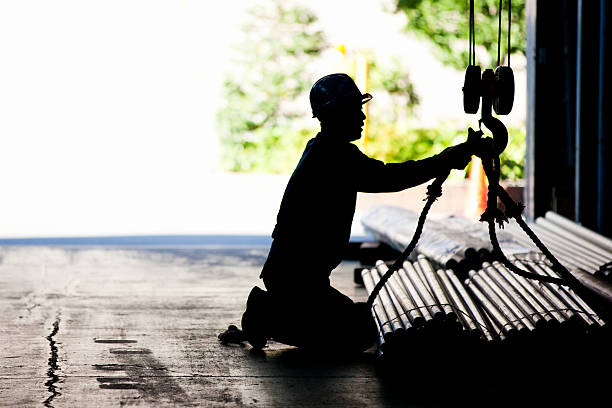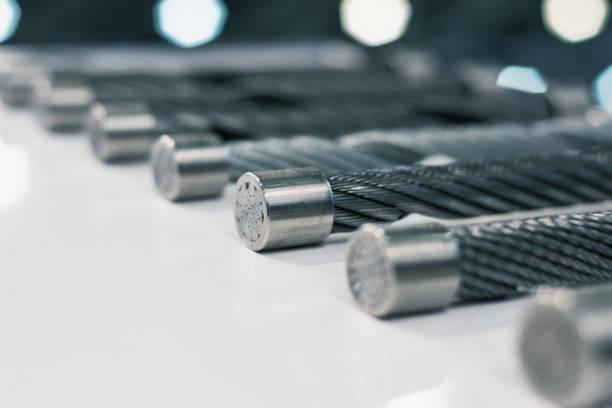How Steel Rope Manufacturing Has Transformed Over the Years: A Tale of Tradition and Innovation
The Roots of Rope-Making: From Ancient Twines to Industrial Cables
Handmade Beginnings: The Earliest Forms of Ropes
Rope-making has been practiced for thousands of years, with some of the earliest evidence of handmade ropes dating back to prehistoric times. Primitive ropes were likely made by hand-twisting available natural fibers like grasses, vines, bark fibers, animal hides, and hair. These early ropes were used practically - for tasks like pulling, lifting, carrying, attaching, and climbing. Rope-making was essential yet laborious, produced solely by hand in limited quantities. As early societies grew more complex, rope-making techniques became more advanced and specialized. Stronger and more complex ropes were developed using fibers like flax, cotton, silk, wool, and even tree roots. Rope-making guilds and cottage industries emerged. While still made completely by hand, ropes were produced on a larger scale and used extensively in sailing, construction, and other expanding industries.

The Transition to Machine: The Birth of Modern Rope-Making
The 19th century brought massive changes to rope manufacturing with the advent of industrialization and mechanization. New spinning and twisting machines streamlined rope construction and allowed for high-volume production. Natural fibers continued to be the main material used, but techniques like wire rope core construction brought added strength. The first wire rope patent emerged in 1834, setting the stage for modern steel cables. Other notable developments included the use of manila hemp and sisal fibers, which produced strong and durable ropes well-suited for ships and heavy industrial use. While still labor-intensive, rope-making became less of a skilled craft and more standardized with machines to assist in the repetitive tasks of spinning, laying, closing, and twisting rope components.

Steel Takes the Stage: The Introduction of Steel Ropes
The early 20th century saw steel emerge as the dominant ropeway material, completely transforming the industry. After the mass production of steel via the Bessemer process made it widely available, steel quickly replaced traditional fibers. Its superior strength, durability, flexibility and resistance to corrosion made it ideal for hoisting, hauling, and transmission cables. One of the first power transmission lines made of steel rope was installed in Germany in 1904. Other early examples include elevators with steel cables and steel structures secured by rigid steel wire ropes. Steel rope manufacturing ramped up dramatically to meet demand, with new methods for making high tensile carbon steel wire and assembling it into complex ropes and strands.
Technological Advancements in Steel Rope Manufacturing

From Manual to Mechanical: The Shift in Manufacturing Techniques
Early steel rope manufacturing was done by hand, with workers manually gathering and twisting wires to form strands before closing them into ropes. But by the early-to-mid 1900s, specialized steel rope making machines automated many of these functions. One major innovation was the development of wire drawing machines that used a series of diamond dies to reduce steel rod into fine wire. Other machines mechanically assembled the wires into larger strands and ropes. This dramatically increased manufacturing efficiency and precision while reducing labor. Testing and inspection also became more rigorous and technical. Later computer-controlled programmable machinery brought even greater levels of automation, precision, speed and control. While still a specialized process requiring knowledgeable technicians, modern steel rope manufacturing has come a long way from its manual beginnings.

Material Innovations: The Evolution of Steel Alloys
Beyond manufacturing advancements, the materials used to make steel wire and rope have also evolved considerably over the past century. Carbon steel has remained the predominant type used, but alloying elements like manganese, silicon, nickel, chromium and vanadium have been added to optimize properties like strength, corrosion resistance, and fatigue performance. Stainless steel grades have also emerged for ropes used in highly corrosive environments. And high-carbon, ultra-high-strength steel wires push load capacities to new extremes. Coatings and impregnations have also been developed, from traditional fibers, waxes and greases to modern polymers. These help lubricate the internal rope structure or protect against abrasion, corrosion and other damage. The never-ending quest for stronger, lighter, more durable steel rope has fueled continual metallurgy innovations.
Precision Engineering: The Impact of Computer-Aided Manufacturing
Beginning in the 1970s and 80s, computer technology transformed steel rope design and manufacturing. The complex balance of wire sizes and placements for optimal strength, flexibility and service life was once left largely to rule-of-thumb methods built from experience. But finite element analysis (FEA) software enabled engineers to model rope constructions and simulate real-world performance with precision. This led to high-performance rope designs undreamed of in earlier eras. Computer-aided design (CAD) also automated the creation of precision tooling and machinery for unprecedented levels of accuracy in wire drawing, stranding and closing operations. Programmable, computer-controlled equipment then brought these complex rope designs to life with exacting precision time and again. Digital quality control systems also help ensure each finished rope meets stringent specifications.

The Modern Era: Automation and Sustainability in Rope Production
Robotics and Automation: Increasing Efficiency and Safety
The latest phase in steel rope manufacturing is increasing automation through robotics and artificial intelligence. Robotic arms now handle many hazardous and repetitive production tasks - like moving, coiling, bundling and packaging finished ropes - with more precision, speed and reliability than humans. Automated inspection systems also use machine vision and AI to check rope quality and tolerances. These technologies boost efficiency while reducing waste and human error or injury. Some wire and stranding processes are also becoming more automated, while innovations like automated spooling wind finished ropes precisely and consistently. With Industry 4.0 and the Industrial Internet of Things enabling advanced interconnected systems, steel rope production is more automated than ever.
Eco-Friendly Practices: The Push Towards Sustainable Manufacturing

Advanced Testing and Quality Control: Ensuring Reliability and Performance
Along with automation advancements, steel rope makers are also adopting more sustainable and eco-friendly production methods. Energy use, water consumption and waste have been reduced through conservation initiatives. Some facilities now run partially on solar or wind power. Recycling programs also give steel scrap and other byproducts new life instead of sending them to landfills. The steel itself comes from high percentages of recycled content. And new technology enables more ropes to be produced from fewer raw materials. Greener packaging, logistics and transportation methods also reduce environmental impact. Though energy and resource intensive, rope makers are proving steel production can be done responsibly through innovation and efficiency.
Modern steel wire rope manufacturing also employs advanced testing and quality control at every step - from incoming raw materials to finished ropes and assemblies. Stringent protocols using cutting-edge equipment ensure strict specifications are met for strength, corrosion resistance, fatigue life, defect rates and more. Nondestructive evaluation methods even allow inspecting rope integrity without compromising it. And comprehensive life cycle testing under simulated working environments gives proven performance data. This rigorous testing and quality commitment results in exceptionally reliable, long-lasting and high-performing steel rope products that users can stake their reputation on. When lives and critical operations are on the line, advanced testing delivers failsafe reliability and peace of mind.



